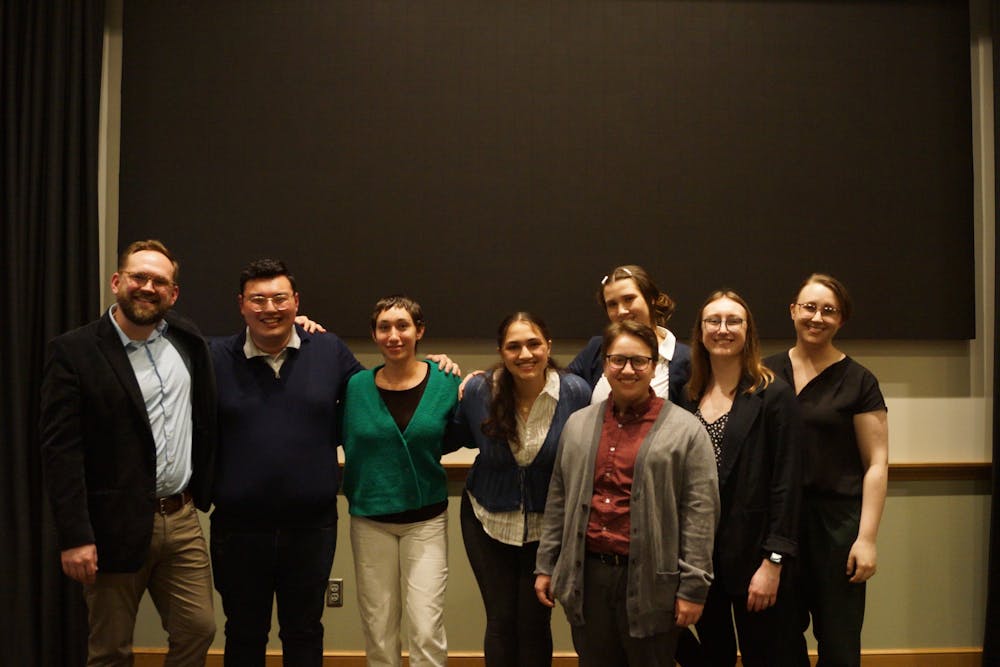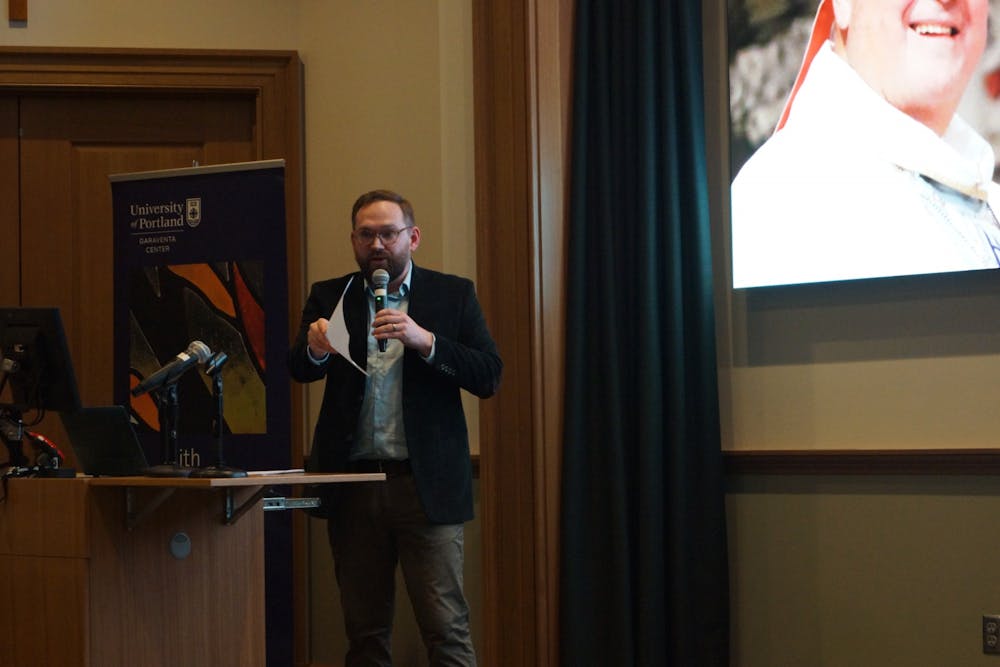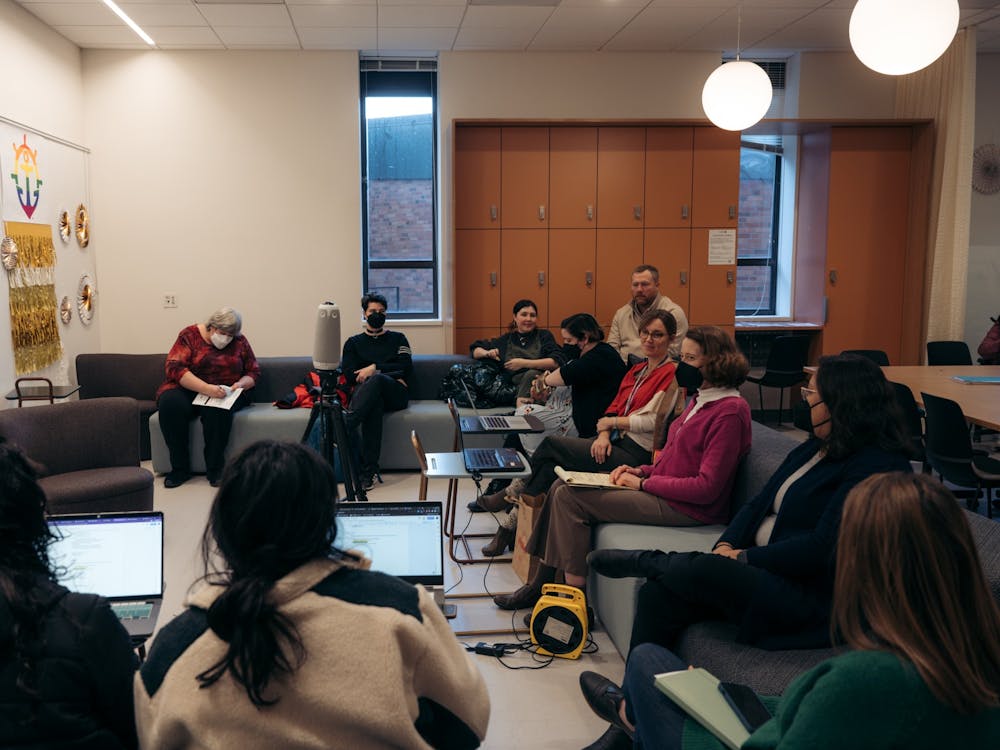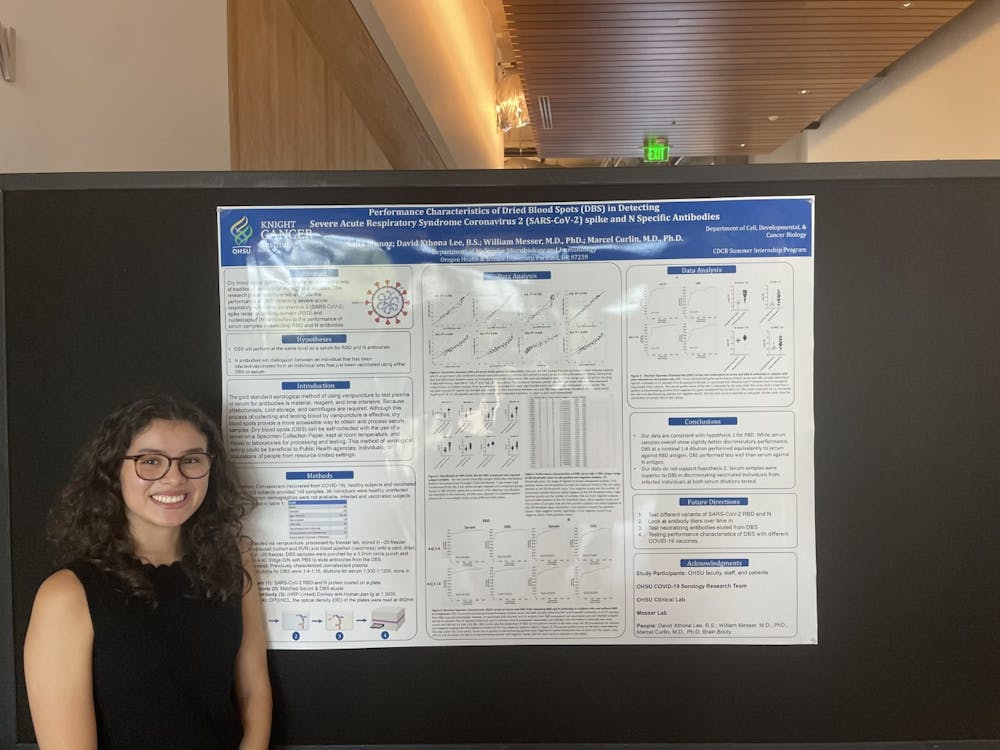Rhetoric is described as the art of speaking or writing effectively. It is used in our daily lives to not only convey what we are thinking but also how we get our way or at least our point across.
On Wednesday, March 22, the Collaborative Humanities Investigating Religion and Power (CHIRP) research group presented their findings. The presentation centered around discussing rhetorical violence in response to the Catholic sexual abuse crisis.
This presentation and the CHIRP research group both seek to highlight the harm that the Catholic church has done, and can do. Since CHIRP is separate from the University of Portland it offers them a space to critique the school’s role in this harm but also to create a space for UP to learn and try to make things better for their students.
The research started in May of 2022 when a group of students came together with theology professor David Turnbloom to create the group.
“I got tenure here and then I wanted to find a way to make a much more clear connection between research and scholarship,” Turnbloom said.
He and a few students —senior Noah Lamberger, senior Meg Breen and junior Kate Seddon— came together and started CHIRP under the branch of the Student Undergraduate Research Experience (SURE).
“We really co-founded it, the four of us,” Turnbloom said. “Because I wanted to make sure that students had ownership over not just the research we do but also the way we do it.”
Turnbloom was an integral part of creating the group as many students were drawn to him. He has made a lasting impression at UP — with Co-Director of the Garaventa Center Karen Eifler introducing him as “the beloved Dr. Turnbloom.”
“I took a class with Dr. Turnbloom and I went to the presentation last spring,” recent graduate Maya Doss-Hammel said. “That presentation really inspired me … it ignited my passion for CHIRP. It was an intersectional research group that gave students a voice and gave students the power to lead and research what they wanted to.”
Breen, Doss-Hammel, Lamberger, Seddon, along with sophomore Ben Carey-DiGregio and junior Sophia Osuna took to Dundon-Berchtold to not only present their findings but to engage in a discussion with the UP community and beyond.
Their presentation picked apart what rhetoric is as well as how it can be used by the Catholic church to put down other people.
The presentation defined rhetoric and explained its power. Lamberger and Osuna started by discussing why rhetoric is important (it is the language used to persuade) and then explained how its devices can be used to dismiss victims.
From there, Turnbloom offered examples of Roman Catholic clergy using rhetoric to help protect themselves and dismiss others. He also explained how ambiguity is often associated with abusive speech as it makes it hard for victims to understand what is being said and creates a feeling of instability.
Doss-Hammel then began the CHIRP lab’s work of explaining each rhetorical device in relation to the Catholic church’s abuse. One of those devices, called bracketing, is a way of fencing off the conversation and in conversations that can be used to put the church over the individual in a negative way.
Furthering the section illustrated by Doss-Hammel, Breen expanded on more ways that this is perpetuated — looking specifically at justification and excuse — two devices that are linked in their manner of control. Intersectionaly plays a huge role here, it is most often that these devices are used hand in hand and not alone.
The research team ended on a more positive note, however, offering a solution to the way rhetoric is used. Seddon and Carey-DiGregorio introduced trauma-informed rhetoric, a way to reduce victimization while also being aware of trauma-informed care and how that should be used.
This presentation also gave space to a respondent — Liz Crawford, who works with Clackamas women’s services as an outreach and training coordinator. She highlighted \the work this group has done as incredibly timely and useful.

“I really cannot emphasize enough the kind of impact that this has on our work and our ability to justify the work that we're doing,” Crawford said. “And [to be able to] make a case for when we are going in with clergy and lay people and saying ‘hey we've got this information’ ‘we have this training for you’ this really justifies that.”
She also drove home the idea that the church’s mission is not more important than one’s pain. A point the research group hopes to remind people of through their hard work.
After the presentation, Turnbloom turned to those in attendance and offered a space for any questions or comments. Theology professor Carol Dempsey offered insight into the Catholic church and participated in a dialogue about leaving the church.
Both Lamberger and Turnbloom added personal experiences about how religion isn’t just the institution that they’re critiquing but a way to engage with the traditions in an individual way. Seddon took to mediating the Q&A and discussing ways to enact change both systematically and personally.
The CHIRP lab is currently looking for people to join two different teams. The first will be overseen by Turnbloom and it seeks to continue the work looking at Cultures of Abuse in the Catholic Church while the other will be overseen by Paddy McShane and hopes to look at the ethics belief.
Students who want to join the CHIRP lab can apply via their website. The work starts in May and goes throughout the summer and into next year. The application deadline is April 11.
Wilder Isom is the sports editor at The Beacon. She can be reached at isomw24@up.edu.









